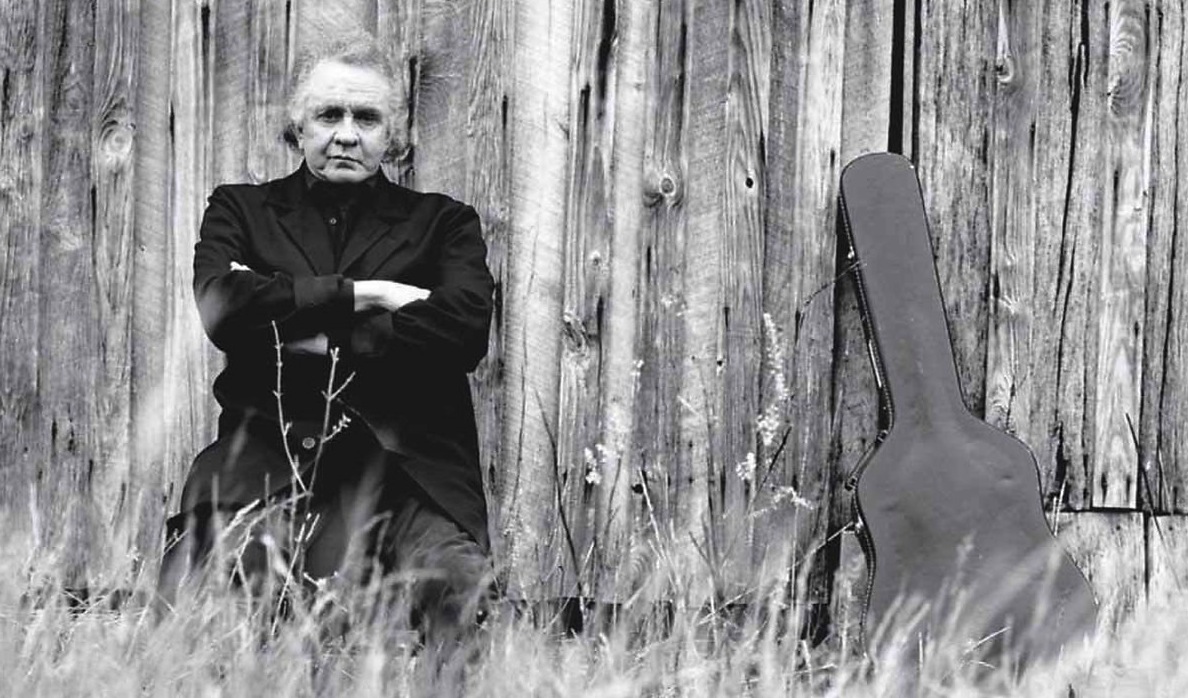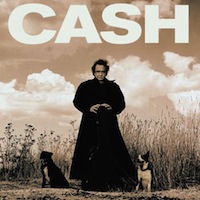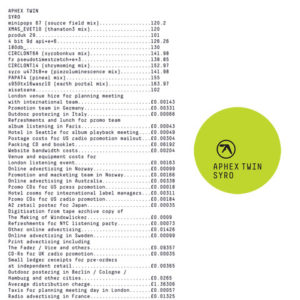10 Essential Comeback Albums

The past decade has seen an unusually fertile period of rock music reunions, from the Pixies to The Replacements, and more than a few notable recorded returns for several of the bands that were previously inactive for a long period of time. Not all of them were great (Big Star, The Stooges, again The Pixies), but as the future continues to promise the return of even more celebrated artists (such as Giorgio Moroder, who releases a new album this month), it got us thinking about those artists whose comebacks not only didn’t tarnish their legacy, but actually added powerful and laudatory new chapters. Admittedly, a lot of them happened in the last 10 years—pop music hiatuses inevitably point to more recent returns to the stage—but their histories stretch back much farther. Call it whatever you want, but here’s our list of 10 essential comeback albums.
 Tina Turner – Private Dancer
Tina Turner – Private Dancer
(1984; Capitol)
Ten years removed from her partnership with cracked ex-husband Ike and five years after the last release of her drifting solo career, Tina Turner defied all expectations—even those of her record label—and produced the archetypical comeback album with Private Dancer. The support staff was a motley crew of producers, writers and players (Rupert Hine, members of Heaven 17, Mark Knopfler, Jeff Beck). Revisionist history paints Private Dancer as a statement of triumph, but that’s a bit misleading: The songs are rife with insecurity, denial and a surprising emotional rectitude. It’s Tina’s will that triumphs. “What’s Love Got to Do With It,” one of the best-written No. 1 songs of the ‘80s, was musique noir that both promoted and decried romantic cynicism. The Knopfler-penned title track showed Tina truly wearied by resignation and the blasé expectations of chauvinism, but “Better Be Good to Me” turned that around into newfound but still fragile self-respect. And on “Steel Claw” Tina harnessed all that fresh determination and put an entire community on her shoulders. Private Dancer’s production conventions haven’t all aged very gracefully, but Tina’s old-school fire gave mainstream pop a clanging wakeup call. In return she got an international smash, and rock music got a rare, grand shot of poetic justice. — PP
 Johnny Cash – American Recordings
Johnny Cash – American Recordings
(1994; American)
When I think of comeback records, American Recordings is the first one that comes to mind. There’s a little bit of irony there because American Recordings is not the first time Johnny Cash relaunched his career or restructured his public image. (That designation most accurately falls on the also-excellent Live at Folsom Prison.) But the American series, which American Recordings kicked off, was a re-envisioning on a massive scale. But, oddly enough, they were based around a very simple concept: to scale Cash back to what he did best. Namely, simple arrangements, intimate recordings and a mixture of songs old and new. To make his vision a reality, Cash found the perfect partner in Rick Rubin, whose work on the project turned heads in its own right, Rubin being better known for his work with metal and hip-hop artists of the day, such as Slayer and LL Cool J, respectively. American Recordings was also the first time Cash experimented with putting his spin on songs written by modern-day legends, since both Tom Waits and Glenn Danzig contributed songs they specifically wrote for Cash to sing. This path of thinking would eventually lead to Cash’s most successful modern-day single, that of course being his version of Nine Inch Nails’ “Hurt.” – ATB
 Dinosaur Jr. – Beyond
Dinosaur Jr. – Beyond
(2007; Fat Possum)
It’s generally common knowledge that Dinosaur Jr. is ultimately the product of three individuals—J Mascis, Lou Barlow, and Emmet “Murph”—but it cost frontman J Mascis eight years and a few personal relationships to figure this out. The Jazzmaster fuzz-god was notorious for his overbearing personality, going as far as dictating exact drum parts to Murph during recording sessions, and abandoning Barlow right before their Australian tour in 1989. If the idea that chemistry actually exists between bands feels a bit antiquated in the days of bedroom producers and studio layering, their 2007 return Beyond made a great case for the opposite. Tracks like “Crumble” and “Back to Your Heart” succeed on so many levels not because of their loyalty to the aesthetic of older material, but their fervent rekindling of shared experience and added wisdom. And if the length of their reunion is indicative of anything (they’ve been reformed longer than they were together originally), it’s that they started out on the right foot with this collection of monstrous alt-rock jams. – JM
 Portishead – Third
Portishead – Third
(2008; Mercury)
What is it with these British, female-led, atmospheric groups and their love of hiatus? We lost really fucking good bands from the 1990s like Cocteau Twins and Curve once we saw their breaks of activity turned into fractured relationships. We could then be forgiven if we feared the worst for Portishead, as months stretched into many years after 1998’s Roseland NYC Live presented their hypnotic modern spy music in a live context. Following a flurry of activity surrounding All Tomorrow’s Parties events in Europe, Beth Gibbons, Adrian Utley and Geoff Barrow finally coalesced into being again and produced Third, their quite literally titled third studio album. It could be argued that their long absence from the trip-hop genre they founded helped to effectively smother it, so in its place they presented a beautifully dark series of interpretations of Krautrock (“We Carry On”), tropicalia (“Hunter”), psychedelia (“Threads”), and today’s electronic indie soul in the near-industrial single “Machine Gun.” Adapt or die, right? – AB
 Gil Scott-Heron – I’m New Here
Gil Scott-Heron – I’m New Here
(2010; XL)
I’m New Here is a landmark record in Gil Scott-Heron’s career for more than one reason. On one hand, it was Scott-Heron’s final record, released a little more than a year before he passed. But it was also his first original material in 16 years, and a record that hung heavy with an aura of redemption. So, viewed through that lens, it’s a comeback record in every sense of the word. It was a complete aesthetic transformation for the poet, moving away from heavily rhythmic, full-band backing tracks to a sound loosely informed by trip-hop, folk and post-dubstep. A lot of the time, I’m New Here is a pretty devastating record, especially in retrospect. After all, Scott-Heron always had a tendency to focus on socio-political corruption and misgivings. But moments like the title track, written by Bill Callahan, turn that tension so far on its head that Scott-Heron seems to radiate with hope, as if he’s seeing the world through new eyes. – ATB
 David Bowie – The Next Day
David Bowie – The Next Day
(2013; ISO)
Recorded in utter secrecy with a skeleton crew of players battling extreme urges to break their NDA’s, The Next Day’s release announcement in January 2013 was one of the most shocking of the digital music era. Most thought David Bowie was done making records as he’d provided little more than movie and TV cameos since 2003’s Reality. But his nicely orchestrated re-emergence created his most positive frenzy since he’d left RCA: the cover, adulterating that of “Heroes” and promising a readdressing of sorts; the minimalist, unaccountably sad video for “Where Are We Now?”. The album itself was only narrowly steeped in the hallmarks of Bowie lore: You could hear some of the tricks he used with Eno on the title track, or the straight-ahead rock of Scary Monsters on “Valentine’s Day.” But the ideas and pictures Bowie drew on The Next Day were powerful new visions, sung in a voice that had become just the slightest bit more frail, to suggest that ephemera would catch up with everyone eventually. So the stop-start hoods of “Dirty Boys,” the insulated bourgeoisie of “The Stars (Are Out Tonight)” and the harsh self-adjudicator of “Heat” (the album’s final words: “My father ran the prison”) made for a work that both paid homage and forced reconsideration of an entire lifetime in music and, improbably, created the same anticipation for a new Bowie album that used to happen in the ‘70s. – PP
 My Bloody Valentine – mbv
My Bloody Valentine – mbv
(2013; Self-released)
Released just a month before David Bowie emerged in 2013 with his first studio album in a decade, long-lost shoegaze legends My Bloody Valentine had made the comeback of the year—and until we see something more earth-shattering still, the decade—My Bloody Valentine’s long-awaited fourth album mbv almost literally broke the Internet. The day it was posted for purchase and download on the band’s website, the sheer volume of users attempting to access it caused their site to crash, and quite a few intense cases of nerd rage. Really, just the existence of the album was enough to freak out. Kevin Shields had been saying since, well, the ’90s that he was working on their follow-up to Loveless. And we had reasons for not believing him; 20 years is a long time to ask everyone to wait. How were we to know that it would be there on the 22nd year, or that it would be alternately stunning and chaotic, and more of a triumph than it had any right to be after all this time. But there’s one thing about mbv that made the comeback all the more welcome: More than anything, it sounded like My Bloody Valentine. – JT
 Aphex Twin – Syro
Aphex Twin – Syro
(2014; Warp)
If we have to split hairs here, Richard D. James himself never really went away after his 2001 Aphex Twin release Drukqs. That was followed through the Aughts by his 26 Mixes for Cash compilation, as well as work under aliases like AFX and The Tuss. Yet the Aphex moniker is the milkshake that brings all the nerds to his yard, and a 13-year break from the responsibilities that name carries may have been just what James and the electronica world needed. Drukqs and the releases leading up to it through the latter 1990s had been overstuffed and maddeningly inconsistent. The joyous, constantly morphing acid expressions of Syro constitute the most unified set of Aphex Twin sound in 20 years, and the most regularly pleasing since he first landed in the public consciousness with Selected Ambient Works 85–92. – AB
 D’Angelo – Black Messiah
D’Angelo – Black Messiah
(2014; RCA)
We’d all but given up on a new D’Angelo record by the time Black Messiah dropped—something we’d been waiting on since 2000’s critically lauded Voodoo made the then-young R&B artist one of our favorites across all genres. But damn if Black Messiah wasn’t worth the wait. Released almost overnight when the controversial decisions in the Eric Garner/Ferguson, Mo. case moved D’Angelo to drop the record before the record’s marketing cycle had kicked off, the crooners’ third record is an epic, moving masterpiece. And not only does it groove, slink and purr as you’d expect from a D’Angelo record; it also contains heavy elements of psychedelic soul, thanks in large part to an talented cast of studio musicians that includes none other than The Roots’ ?uestlove. It’s a wild, unpredictable record mixing elements of funk, gospel, jazz and rock into D’Angelo’s already grooving sound. While many of the songs continue the sexy flair of the man’s previous records, a majority of the tracks there are rather political in nature; D’Angelo wasn’t just back—he had a message to deliver. – ATB
 Sleater-Kinney – No Cities to Love
Sleater-Kinney – No Cities to Love
(2015; Sub Pop)
Among Treble’s staff, Sleater-Kinney are particularly loved, with Dig Me Out and The Woods ranking as two of this writer’s favorite records of all time. Fitting, then, that the trio’s comeback record would combine the succinct songwriting of the former with the audacious, loud experimentation of the latter. No Cities to Love doesn’t apologize, and it also doesn’t compromise, perhaps because it’s written and performed by three women who didn’t need to get back together in order to be successful. Since going on hiatus in 2006, Janet Weiss, Corin Tucker and Carrie Brownstein have continued to make brilliant music in a variety of projects, and Brownstein even managed to find a wider audience for herself (and, consequently, any band she’s ever played in) through IFC’s Portlandia. So if Sleater-Kinney was going to get back together, it wasn’t going to be for the attention, and it was going to kick some ever-loving ass. And that’s all you really need to know about No Cities to Love before diving into it: it’s perhaps the most energetic and dynamic record by a top-notch ‘90s punk act that might as well have coined both those words. – ATB
You might also like:




